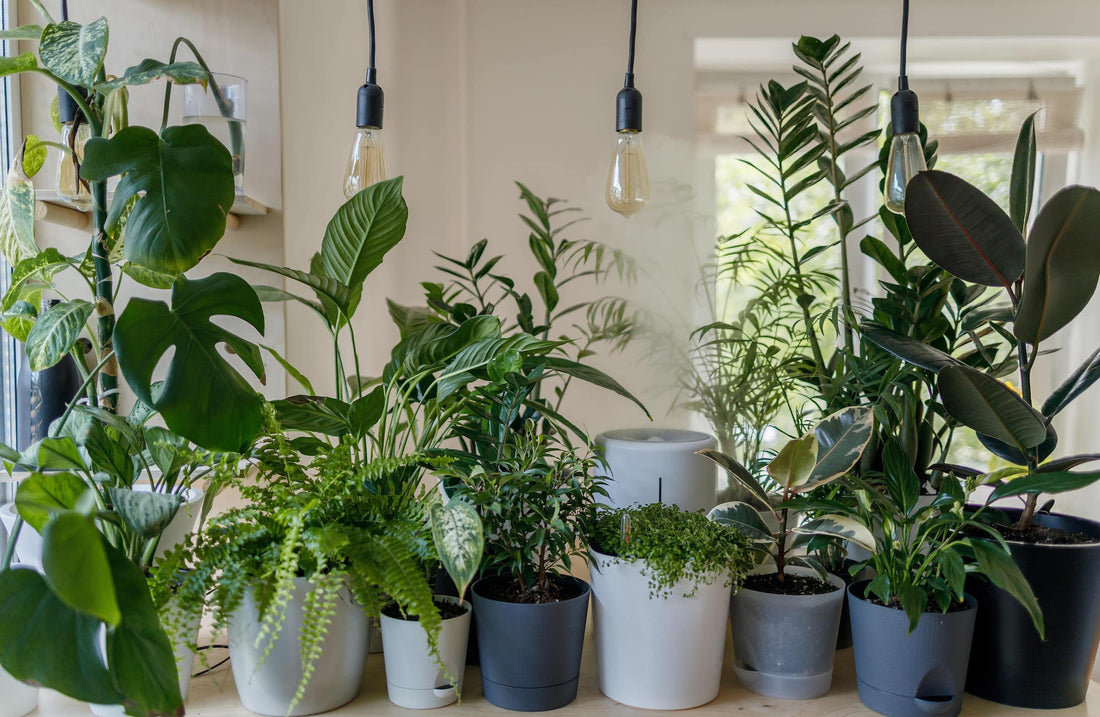
Have you ever wondered how plants get their nutrients and what role calcium plays in their growth and development? Some fertilizer brands highlight their calcium content, but there's a toxic truth that sometimes calcium can do more harm than good, leading to nutrient imbalances and soil health issues.
SUMMARY:
4 minute read
- The Importance of Calcium for Plants
- The Role of Calcium in Plant Development
- Why Your Plant Doesn't Need a Lot of Calcium
- The Misconception of High Calcium in Fertilizers on the Market
- The Calcium Solution
Just like us, plants need a balanced diet, and calcium is a superstar in their nutritional lineup. But, how much calcium is just right? While calcium is crucial for plant health—involved in cell wall formation, membrane stability, enzyme activity, and stress tolerance—not all plants need the same amount. In fact, too much calcium can be problematic.
In this article, we'll dive into how to navigate calcium in fertilizers for balanced plant nutrition, keeping our green friends happy and healthy.
The Importance of Calcium for Plants
Think of calcium as the scaffolding of a building, essential for keeping a plant’s structure strong and upright. It plays a pivotal role in forming and maintaining the structural integrity of plant cell walls, contributing to cell strength and rigidity.
Calcium is also crucial for cell division and elongation, regulating these processes and influencing overall plant growth and development. Plus, it's like a backstage helper in a theater, facilitating the uptake of other essential nutrients by plant roots and functioning as an activator for various enzymes involved in metabolic processes.
Calcium is essential for keeping a plant's structure strong and upright, as well as contributing to cell strength & rigidity.

The Role of Calcium in Cell Wall Development and Plant Structure
Calcium isn't just important; it's a key player in cell wall development. Imagine cell walls as the outermost protective gear of plant cells, providing shape, strength, and protection.
These walls are made up of various substances, and calcium acts as a crucial binding agent, much like the glue holding everything together. It also helps regulate the cell wall's porosity and elasticity, affecting water and nutrient transport, gas exchange, and cell expansion.

Why Your Plant Doesn't Need a Lot of Calcium
While added calcium can benefit plants for the short term, too much calcium builds up over time and can push other important nutrients away, leading to a bit of chaos in the soil.
High levels of calcium can compete with other cations, reducing the availability of these nutrients for plant growth. For example, too much calcium can lead to a magnesium or iron deficit, affecting photosynthesis.
Similarly, calcium can form insoluble compounds with anions like phosphate, making these nutrients less available and causing deficiencies. Plus, it can turn the soil too alkaline, much like adding too much baking soda to a cake, disrupting the soil's nutrient balance.
Repotting is a process reserved for when the soil or roots are in poor condition. Potting up should happen when your plant outgrows its pot. Read more about repotting best practices.
Too much calcium can lead to a magnesium or iron deficit, affecting photosynthesis.

The leaf here is an example of a nutrient deficiency in progress. Yellow leaves while the veins remain green is your indicator to check soil pH.
The Misconception of High-Calcium Fertilizers in the Market
While some fertilizer brands tout high levels of calcium as a standout feature, this approach often overlooks the bigger picture of long-term plant health. It's a common misconception in the market – more calcium is not always better. Many of these products, while marketed as a quick-fix for plant strength and growth, can actually lead to potential drawbacks:
-
Risk of Overdoing It
Just like overfeeding can be unhealthy for us, excessive calcium can disrupt the delicate nutritional balance plants need. It's about giving your plants a balanced diet, not just loading them with one nutrient.
-
Long-Term Health Concerns
High calcium levels can lead to nutrient lockout, alkaline soil, and a host of other issues that might not be immediately apparent but can affect your plants' health in the long run.
-
A Misguided Marketing Angle
Promoting high calcium content might sound appealing, but it's often a marketing angle that doesn't fully consider the nuanced needs of plants. True plant nutrition is about balance and harmony, not excess.
In contrast, Bless Your Soil® understands that effective plant nutrition is a delicate balance, especially when it comes to calcium.

Bless Your Soil® Fertilizers: A Balanced Solution
Bless Your Soil® stands out in this crowded market by providing organically-bonded and ionized calcium in just the right amounts. It’s not about bombarding your plants with excessive nutrients; it's about nurturing them with a balanced, comprehensive diet.
Our fertilizers (which we call "plant superfoods") ensure your plants receive the nutrients they need for optimal growth without the risks of over-fertilization. This thoughtful and gentle blend supports stronger plants, healthier roots, and better soil, setting your garden up for long-term success.
Our thoughtful and gentle blend of fertilizer supports stronger plants, healthier roots, and better soil.
Conclusion
Balancing calcium in your plant nutrition isn't just a science; it's an art. With Bless Your Soil® fertilizers, you're ensuring that your plants are getting the right amount of calcium, along with other essential nutrients, in a form they can easily use. This way, you're not just feeding your plants; you're nurturing them for optimal growth and health.
Ready to give your plants the nutrition they deserve? Try Bless Your Soil® and see the difference for yourself. Happy planting!
Hepler, Peter K. “Calcium: A Central Regulator of Plant Growth and Development.” The Plant Cell, vol. 17, no. 8, 2005, pp. 2142–55. JSTOR, http://www.jstor.org/stable/4130945. Accessed 6 Jan. 2024.
R. G. Wyn Jones, and O. R. Lunt. “The Function of Calcium in Plants.” Botanical Review, vol. 33, no. 4, 1967, pp. 407–26. JSTOR, http://www.jstor.org/stable/4353748. Accessed 6 Jan. 2024. Ozores-Hampton, Monica. "Effective Strategies to Correct Iron Deficiency in Florida Vegetable Crops". HortTechnology hortte 23.5 (2013): 548-552. < https://doi.org/10.21273/HORTTECH.23.5.548>. Web. 6 Jan. 2024.



